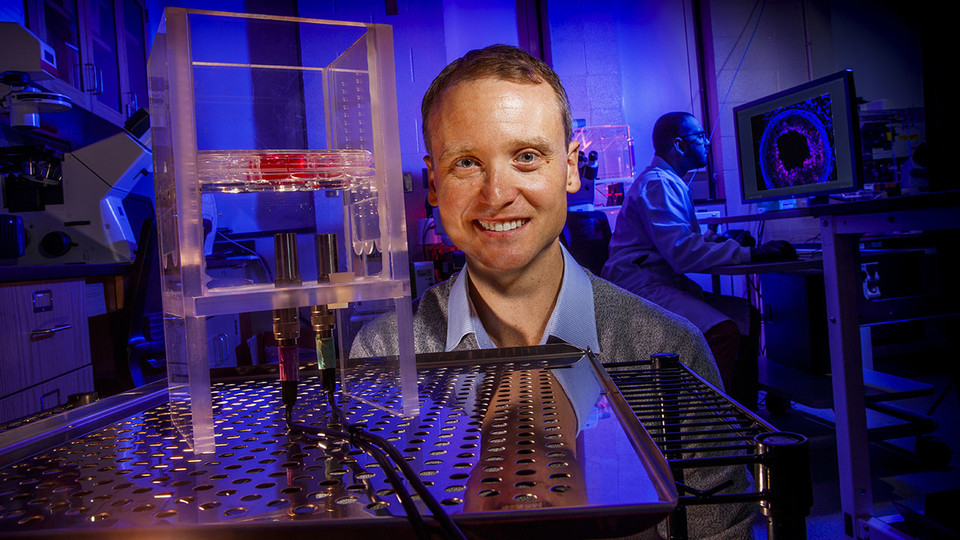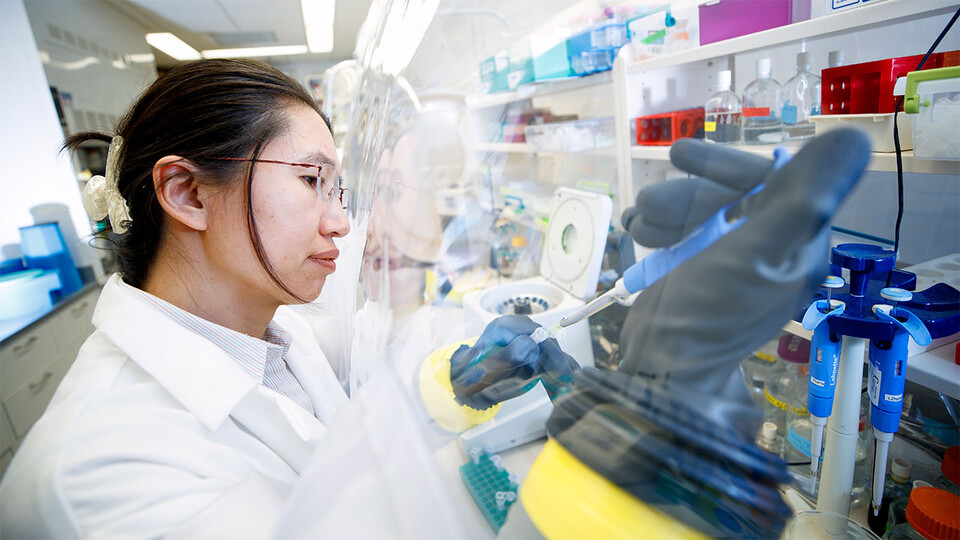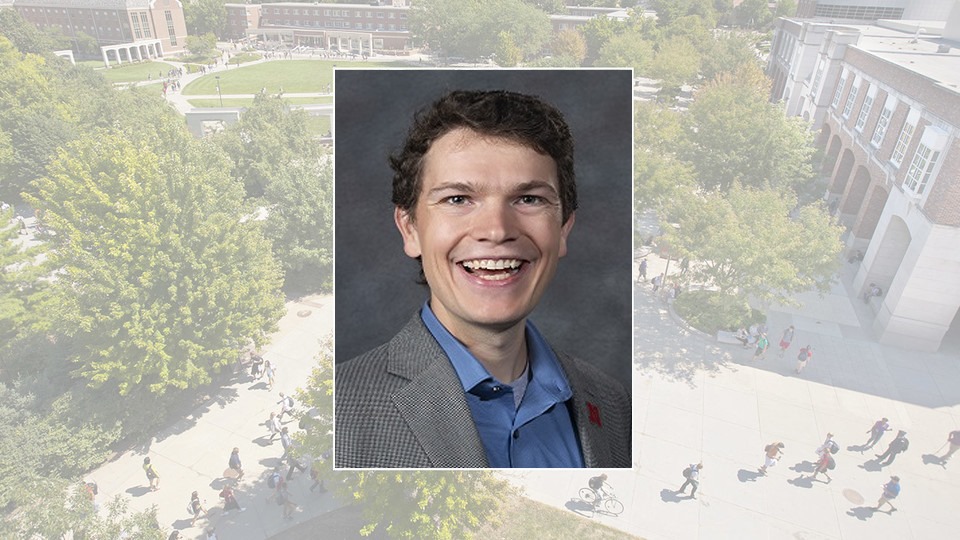
Cardiovascular disease is the leading cause of death in the United States, killing approximately 647,000 Americans each year. It’s also expensive, accounting for more in health care expenditures — $190 billion annually — than any other diagnostic group.
Atherosclerosis, or plaque buildup in the inner lining of arteries, is a primary driver of cardiovascular disease. There are two main treatment options. Statins, prescription drugs that lower levels of the blood cholesterol responsible for plaque formation, can reduce the risk of heart attack and stroke, but they are not targeted to the diseased artery. Stents — tiny tubes that keep blocked arteries open — are targeted, but their invasive nature poses serious risks to the patient.
University of Nebraska–Lincoln mechanical and biomedical engineer Ryan Pedrigi will use a five-year, $543,000 award from the National Science Foundation’s Faculty Early Career Development Program to lay the groundwork for a targeted, noninvasive treatment for atherosclerosis. He envisions that someday, patients will receive a therapy where ultrasound pulses are applied to diseased arteries, stimulating a cellular response that beats back plaque buildup and prevents further accumulation.
As a first step, Pedrigi will use his CAREER grant to answer fundamental questions about how endothelial cells — the cells that form the inner lining of arteries — respond to low-intensity pulsed ultrasound, or LIPUS. Pedrigi’s idea stems from the knowledge that plaque buildup is much more likely in arterial segments that experience disturbed blood flow — in areas of bifurcation or high curvature, for example. A straight arterial segment, by contrast, tends to be protected because those areas experience normal, or laminar, blood flow.
Laminar blood flow promotes a healthy endothelium, boosting its ability to properly regulate anticoagulation properties, vascular tone and the barrier function. In areas of disturbed flow, these cellular functions are impaired, setting the stage for cholesterol to accumulate in the inner wall of the artery.
“The mechanical environment of an artery is very important in determining its susceptibility to this disease,” said Pedrigi, assistant professor of mechanical and materials engineering. “I had the idea: What if we were able to deliver a therapeutic mechanical stimulus to arteries with atherosclerosis? Would we be able to promote normal cellular function that would lead to plaque regression?”
Pedrigi aims to induce the beneficial mechanical effects of laminar blood flow using ultrasound. An important aspect of this work is to characterize both the mechanical strains and the biological response of endothelial cells that result from different ultrasound regimens.
Previous studies have examined the biological response of different cell types to ultrasound, Pedrigi said, but in general, they have not considered the underlying cell mechanics associated with that response. Filling this gap will enable researchers to leverage the vast literature on the response of endothelial cells to mechanical stimuli to identify the ultrasound regimens that promote the most beneficial biological response.
With his CAREER grant, Pedrigi will determine which ultrasound parameters may be ideal for combating atherosclerosis by studying LIPUS’ effect on human endothelial cells in vitro, or outside the body.
“We want to identify the ultrasound regimens that activate the same signaling pathways as laminar blood flow,” Pedrigi said. “This would indicate that the ultrasound stimulus is able to promote normal endothelial cell functions that might provide therapeutic benefit against atherosclerosis.”
For the project’s education component, Pedrigi aims to attract more women and students from underrepresented groups to mechanical engineering, a field in which women currently receive just 14% of undergraduate degrees, and African American and Hispanic students even fewer. To change that trajectory, Pedrigi wants to showcase lesser-known applications of mechanical engineering through learning modules at freshmen orientation seminars and in the undergraduate courses he teaches.
“For example, it’s not just about designing cars; you can also design new therapies for medicine,” he said. “We want more students to identify themselves as having a role in the field, which could lead to increased participation.”
He’ll also work with local middle schools through Nebraska’s Engineering Ambassadors Network and Nebraska 4-H programs to introduce youth to mechanical engineering through the lens of sports biomechanics. The students will use motion tracking systems to see how a computer can model a particular movement, such as kicking or throwing a ball. They’ll learn how these motion-tracking concepts can be applied in the medical field — for example, to build assistive devices for people with disabilities affecting movement.
Pedrigi said in the big picture, his CAREER project is driven by a need to help his field create more opportunities for translation to the clinic. Although mechanobiology has a trove of research and data tracing back about 50 years, the impact of that work on the clinic has been limited.
“Right now, there aren’t a lot of avenues for translating basic research in this field to the clinic,” he said. “My overarching motivation is to introduce this new avenue and get people thinking about how these concepts can lead to new therapies.”
The National Science Foundation’s CAREER award supports pre-tenure faculty who exemplify the role of teacher-scholars through outstanding research, excellent education and the integration of education and research.


